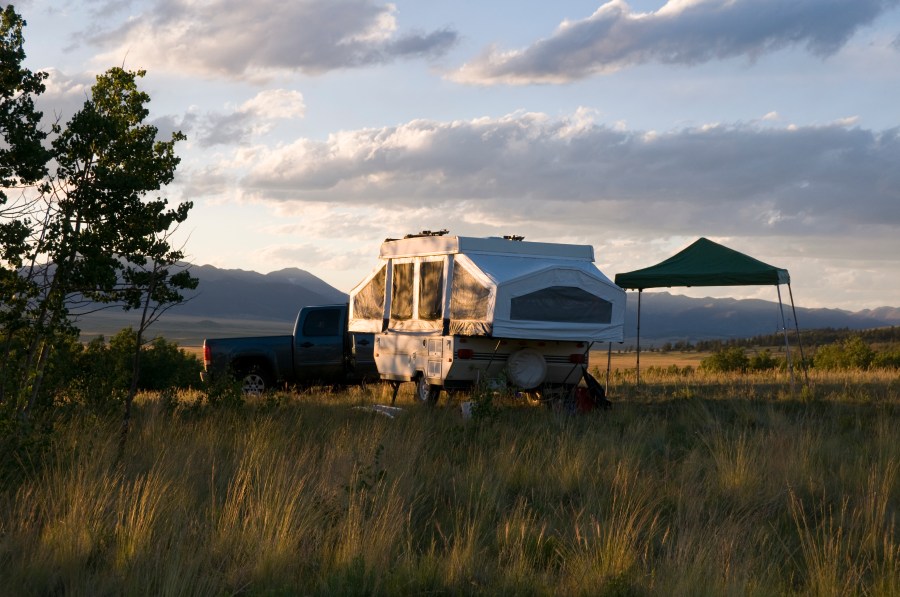Everything Pop-up Truck Campers Have to Offer

With 58 National Parks spread out across the United States all waiting to be explored, it should come as no surprise that pop-up truck campers are becoming more and more popular. There is a long list of benefits that make them ideal for many travelers but affordability and convenience are at the top of the list. Here is a general overview of what pop-up truck campers have to offer, how they are different than slide-in truck campers, the limitations they have and who they might be the perfect fit for.
What Are Pop-Up Campers?
Pop up campers are also sometimes known as fold out campers or tent trailers. They are camping trailers capable of collapsing into a smaller, more aerodynamic shape, making them more manageable to transport than hard side campers, large RVs and fifth wheels. The main part of a pop up camper sits in the bed of the truck while the top, where the bed is, rests on the roof. They are often the same width and depth as the truck and add only a few feet of height. Their relatively small dimensions when collapsed make them easier to transport; owners of pop up campers rarely have to worry about maneuvering around sharp turns or avoiding tunnels with height restrictions.
When the camper is set up, the roof and sides can be raised up to allow more space inside. Owners can also mount a roof rack to the camper allowing space for cargo boxes, kayaks or bikes. The interior has all the essentials: kitchenette, bed, and a small sitting area.
Differences Between Pop-Up and Hard Side Campers
Pop-up campers can sometimes be confused with hard side truck campers but there are many differences. Hard side campers, for example, are generally larger and taller, more expensive and hard-shelled, making them more durable. They also have a kitchenette that can be upgraded to a full kitchen consisting of a stove and refrigerator. Pop-ups, on the other hand, have a soft durable exterior made of waterproof modern vinyl. Driving a pop-up is much easier as there is less weight, a lower center of gravity and less wind resistance. Hard side campers sit a few feet taller on the truck and increase gas mileage due to their less aerodynamic setup. While hard side campers are still smaller than many RVs, drivers still have to pay attention to clearances and height restrictions.
Limitations of Pop-Up Campers
You may think that a pop-up camper is the way to go due to their cost, convenience, and aerodynamic shape. However, pop-up campers aren’t without their limitations. Pop-ups can be difficult to fold when conditions are wet, making them inconvenient for rainy climates. They are also less secure and private than hard side campers. Those who have back issues or who are unused to physical exertion may find setting up pop-up campers difficult. Hard side campers are also often preferred if the climate is extremely hot or cold as they offer better insulation due to the hard walls.
Is a Pop-Up Camper Right For You?
If you are a backpacker or a tent camper that is looking for a little more comfort, a pop-up style camper is a good way to go. It is not a huge investment but is a good taster to see if this is worth spending more money on. Because of the small size, it is perfect for single people or couples that are on a tight budget. It is ideal for anyone who enjoys going off the beaten track and far along the dirt roads. Unlike hard-side campers, you don’t have to worry about clearance, high center of gravity or difficult maneuverability in general. The size also makes it near-universal half-ton truck compatible. It even works with a select range of mini trucks. Before rushing off and purchasing a new one, consider looking at used ones first. Figure out what works and doesn’t work for your needs and budget and go from there. But most of all, enjoy the great outdoors.





